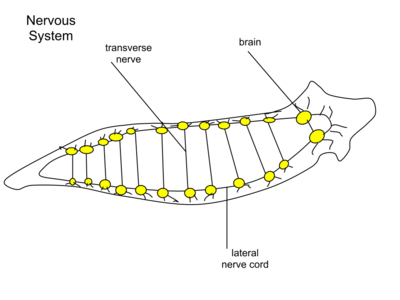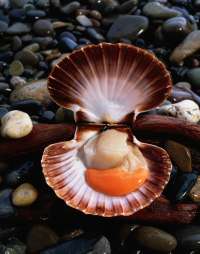
The cheetah (Acinonyx jubatus) is a large feline (family Felidae, subfamily Felinae) inhabiting most of Africa and parts of the Middle East. It is the only extant member of the genus Acinonyx. The cheetah can run faster than any other land animal— as fast as 112 to 120 km/h (70 to 75 mph) in short bursts covering distances up to 500 m (1,600 ft), and has the ability to accelerate from 0 to 100 km/h (62 mph) in three seconds. Data from 367 runs by three female and two male adults, with an average run distance of 173 m, showed that while hunting cheetahs can run 58 miles (93 km) per hour.
This cat is also notable for modifications in the species' paws. It is one of the few felids with semi-retractable claws.
Etymology
The word "cheetah" is derived from the Sanskrit word citrakāyaḥ, meaning "variegated", via the Hindi 'चीता' (cītā).
Genetics, Evolution and Classification
 |
| Cheetah mother with cub |
The cheetah has unusually low genetic variability. This is accompanied by a very low sperm count, motility, and deformed flagella. Skin grafts between unrelated cheetahs illustrate the former point, in that there is no rejection of the donor skin. It is thought that the species went through a prolonged period of inbreeding following a genetic bottleneck during the last ice age. This suggests that genetic monomorphism did not prevent the cheetah from flourishing across two continents for thousands of years.
The cheetah likely evolved in Africa during the Miocene epoch (26 million to 7.5 million years ago), before migrating to Asia. Recent research has placed the last common ancestor of all existing populations as living in Asia 11 million years ago, which may lead to revision and refinement of existing ideas about cheetah evolution.
 |
| Cheetah at Maasai Mara National Reserve |
Subspecies
Although many sources list six or more subspecies of cheetah, the taxonomic status of most of these subspecies is unresolved.[according to whom?] Acinonyx rex—the king cheetah—was abandoned as a subspecies after it was discovered that the variation was caused by a single recessive gene. The subspecies Acinonyx jubatus guttatus, the woolly cheetah, may also have been a variation due to a recessive gene. Some of the most commonly recognized subspecies include:
 |
| A Tanzanian cheetah (Acinonyx jubatus raineyii) |
- Asiatic cheetah (Acinonyx jubatus venaticus): Asia (Afghanistan, India, Iran, Iraq, Israel, Jordan, Oman, Pakistan, Saudi Arabia, Syria, Russia). Current range is in Iran, Pakistan and Afghanistan. Extinct in other Asian countries.
- Northwest African cheetah (Acinonyx jubatus hecki): Northwest Africa (Algeria, Djibouti, Egypt, Mali, Mauritania, Morocco, Niger, Tunisia) and western Africa (Benin, Burkina Faso, Ghana, Mali, Mauritania, Niger, and Senegal)
- Acinonyx jubatus raineyii: eastern Africa (Kenya, Somalia, Tanzania, and Uganda)
- Acinonyx jubatus jubatus: southern Africa (Angola, Botswana, Democratic Republic of the Congo, Mozambique, Malawi, South Africa, Tanzania, Zambia, Zimbabwe and Namibia)
- Acinonyx jubatus soemmeringii: central Africa (Cameroon, Chad, Central African Republic, Ethiopia, Nigeria, Niger, and Sudan)
- Acinonyx jubatus velox
 |
| Portrait of an Asiatic cheetah (A.j. venatecus) by A.N. Kondakov. |
The cheetah's paws have semi-retractable claws (known only in three other cat species: the fishing cat, the flat-headed cat and the Iriomote cat), offering extra grip in its high-speed pursuits. The ligament structure of the cheetah's claws is the same as those of other cats; it simply lacks the sheath of skin and fur present in other varieties, and therefore, with the exception of the dewclaw, the claws are always visible. The dewclaw is much shorter and straighter than that of other cats.
Adaptations that enable the cheetah to run as fast as it does include large nostrils that allow for increased oxygen intake, and an enlarged heart and lungs that work together to circulate oxygen efficiently. During a typical chase, its respiratory rate increases from 60 to 150 breaths per minute. While running, in addition to having good traction due to its semi-retractable claws, the cheetah uses its tail as a rudder-like means of steering to allow it to make sharp turns, necessary to outflank prey animals that often make such turns to escape.
 | ||
| Paws. Note the blunt semi retractible claws |

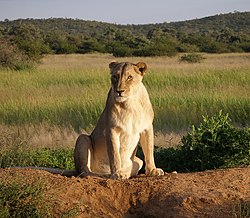



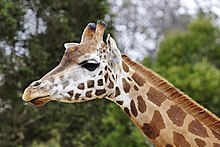
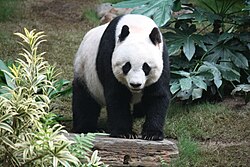

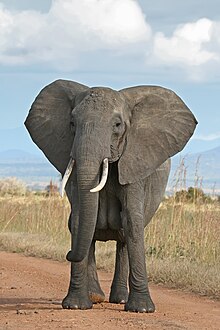

 Planaria worm -
Planaria worm -  Polycelis felina, a freshwater planarian
Polycelis felina, a freshwater planarian 